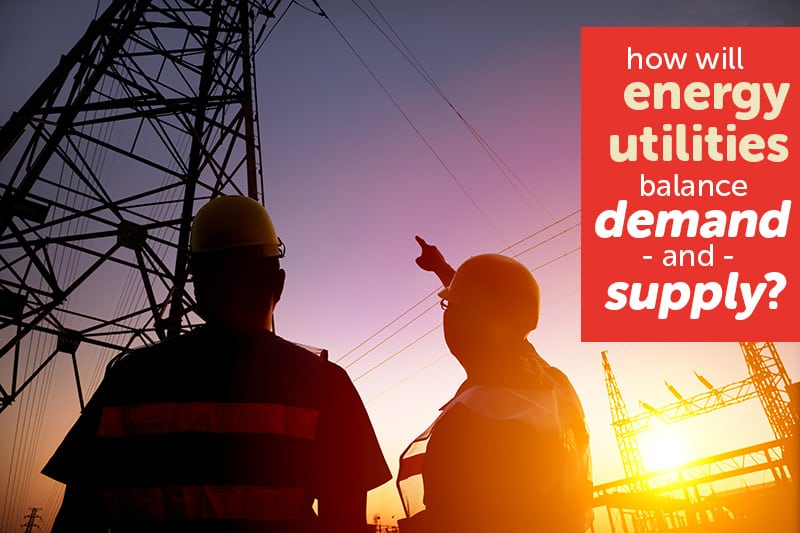As personal and commercial technology increases the demand for energy, the industry itself is changing, impacted by new energy technology. The global demand for power is expected to double from 2010 levels by 2030. Meanwhile, funding for new power plants lags behind, meaning that demand will increase beyond capacity.
 How will energy utilities balance demand and supply? Smart grid technology and the ability to store green energy.
How will energy utilities balance demand and supply? Smart grid technology and the ability to store green energy.
Many homeowners don’t think about the electrical grid – about the 1 million megawatt capacity, the more than 9,200 electric generating units or the 600,000 miles of transmission lines. Energy consumers very rarely think about the asset owners, service providers, and local, state and federal government officials who work in conjunction to provide safe and reliable electricity.
Many certainly don’t realize that the system is aging or what that could mean for them: an estimated $5 trillion to replace aging components, some of which date back to the 1880s, despite increases in investment over more than a decade. Then there is the possibility of blackouts as the grid buckles under the strain of increased demand.
Advanced Energy Technology and the Grid
As utilities work to update the grid and increase capacity, smart grid technology will help energy step into the future. This advanced energy technology will allow the grid to deliver electricity more reliably and efficiently while granting utilities improved security – important for our national security – and reduced peak loads, increased integration of renewables and lower operational costs.
Consumers will benefit as well, as they are able to manage their energy consumption and costs through real-time data – an attractive option, especially for Millennials. Fifty percent of Millennials are willing to pay more for real-time information and 61 percent are likely to sign up for an app that remotely monitors their energy usage and control home elements by 2021.
Advances in energy technology allow communication between the grid and control systems so utilities have up-to-the-minute data on grid stability and the grid automatically self-reports outages, reducing the frequency and duration. Relays and feeder switches immediately sense faults in the system and reroute electricity around problem areas.
Incorporating Clean Energy
No matter how reactive and self-monitoring a smart grid is, it’s still dependent on electric generating units – and technology is making it easier and cheaper than ever to incorporate wind and solar power. Solar panel prices have seen a sustained drop – more than 70 percent since 2009 – and has seen a dramatic increase in interest and implementation, especially in the solar energy field, increasing globally by 50 percent in 2016. The cost per watt has come down from $76.67 in 1977 to 60 cents and third-party owners are leasing skyscraper rooftops in urban areas to build solar farms.
Not only is it cheaper, but it is growing in popularity among consumers. Forty-four percent are interested in environmental benefits and supporting technology and 58 percent are interested in rooftop solar power, while 41 percent would pay an additional $15 per month to expand their utility’s clean energy program.
Storing energy generated by renewable sources made the process inefficient until recently. Ordinary batteries are slow in storing and discharging energy, but ultracapacitors allow clean energy installations, such as windmills and solar panels, to quickly charge. The energy can be quickly discharged at need, increasing useable clean energy by 30 to 50 percent.
However, ultracapacitors are best used for short-term storage, meaning that a combination of the two – ultracapacitors for short-term storage and batteries for longer periods, may be utilities’ best bet when integrating renewables into the grid. Finding a balance between cost, efficiency and capacity will only become easier as the technology improves in the future, while allowing utilities to avoid overbuilding power plants and transmission lines to meet demand spikes.
Despite the challenges, the future of energy, renewables and smart technology is bright.
HomeServe USA partners with utility providers to offer home warranties, complementing other energy services offerings and providing reliable and convenient repair services for home electric, gas, water and sewer lines. To find out how HomeServe can expand your energy services offerings, contact us.

